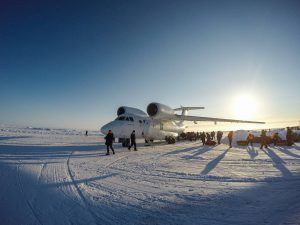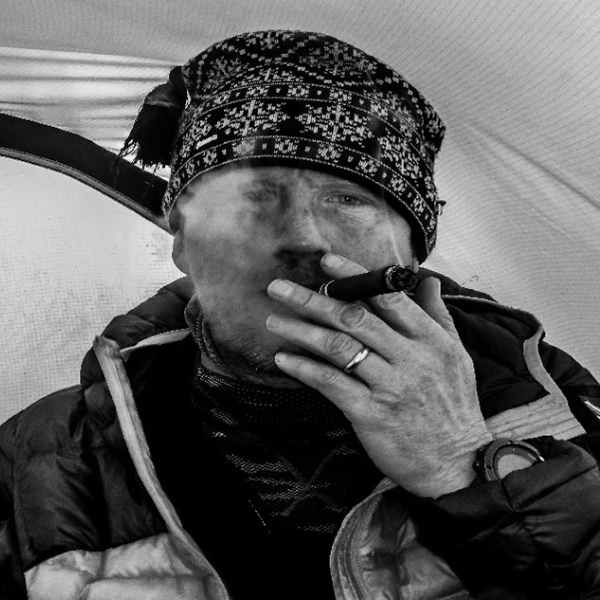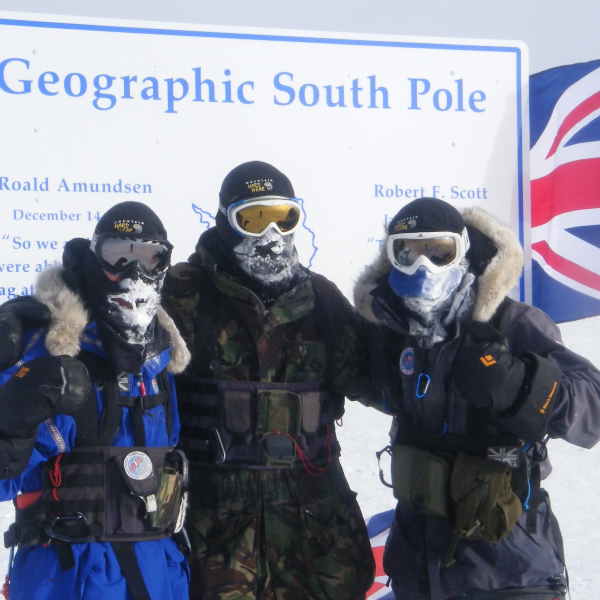“IT IS NOT NECESSARILY REACHING THE GOAL, BUT THE JOURNEY IT TAKES TO GET THERE”.
‘A RACE AGAINST TIME…’
PART 2- PLAN C – READY TO GO?
‘”After 3 years in the making with setbacks and obstacles in our way, it looks like a goer. This is 5 years since I last set off down South in what would be one of the hardest things I have ever done in my life – and now I set off again, to what I believe will be harder-Why? Good question”.
Extract from Vic’s book & diary, Plan D
So we landed in Longyearbyen, Spitsbergen Archipelago, Norway, in what would be our base and final stop before landing on the Arctic Ocean. We were here to conduct our final preparations, meet up with our Russian logistics company and get on with our mission. This was Plan C, going from the Geographic North pole to the Canadian coastline; to document what we saw on the ice.
Longyearbyen was absolutely freezing! We were picked up from the local airport by a large taxi van, roomy enough for all our bags and kit, and made our way to our lodgings. These were in old coal mining cabins, accommodation blocks to the north of Spitsbergen, complete with a restaurant and bar, a small souvenir shop, and a place to socialize and chill. The coal miners’ cabins were ideal for what we needed, offering a basic room each where we could start preparing, and enough room so that the pulk and kit could be laid out. Thankfully the cabins made day ski trips possible, literally from our doorstep out into the wilderness. We still had to be armed, and everyone leaving on skis had to carry a rifle in case of a polar bear encounter. It was quite bizarre to see everyone walking around carrying rifles!
Without knowing what was to come, we were initially glad to be in Spitsbergen. We were aiming to fly out on 1st April, to make sure we have enough time to make it to Canada safely… or was this just an April Fools’ joke?
We were literally ready to go, and so we anticipated leaving as planned. However, as the days passed (with a lack of information), we started to receive news that the ice runway had cracked!

As you can realize this is no ordinary runway, in fact, it’s a runway on the floating Arctic ocean in which they will be landing a huge, heavy aircraft laden with passengers and equipment; something which can’t go wrong. In order to set this runway up, they fly an aircraft from Russia and then parachute a team and a bulldozer to then set up the runway. This is normal! And every year they have been doing this with no great problems- sadly until this year….
As with any expedition, we were prepared to undertake a mammoth mission on a tight timeline, constrained by our logistics company in getting us to our start point, and the environmental changes, including of course the rapidly changing ice and the ever-moving sea. All of which was having a massive impact on the team and my own mental health. We hadn’t even left yet!
We tried to break up the frustrations with regular ski treks, practicing our tent routine, and sleeping out. Through this, we tried to stay focused and maintain a routine, but it became difficult when the days slipped by. We hadn’t yet walked a single mile on the Arctic Ocean, where we should have been. We desperately needed to get on the ice to meet the timelines, or it would be a failure before we had even started.

Constantly being given bad news via the Russian logistics company, that we could not start, had the knock-on effect of lowering morale, increasing frustrations with the company and their people, vexations at the environment, and then internally being irritated within ourselves.
We had to vacate our rooms on several occasions because we had only booked them for a week, and more people were coming to the base and so forcing us to move elsewhere, first to another floor, then another block. With all of our kit, this was painful, and expensive, and created cabin fever all of its own.
04/05/06 April 2016- Extract from Vic’s diary
I write this sat in our tent – no, not at the North Pole, unfortunately – still in Svalbard!! We have just got our pulks back from those damn Ruskies and we have decided to go and do some training locally from the airport.
It really is bad news and a huge delay due to there being a crack in the ice at the runway in Barneo – they initially thought they could fix it, but after 24hrs of poor communication and bad news from the Ruskies, they have got to find a new one!!
It could take 5-7 days!! This obviously is a game-changer for us, due to the time involved, and we sat down at the hotel to discuss our options – we were all adamant to continue as planned as the whole aim of the exped is to document climate change. We also had to move out of our rooms again, only to move back in again – that’s three-room moves so far – it’s been a logistical nightmare and it’s not finished yet.
Sadly, we were told again that the second runway they had set up had now also cracked- more setbacks! So all our planning, at each stage, the obstacles and frustrations, meant that we had to adapt and change our plans again and again. And now, at literally the last minute, we learned that the runway cracks, the compressed timelines, and the political challenges, all meant that Plan C had to change and it would be unfeasible. Instead, we had one option left, our only option to get on the Arctic Ocean and document what we could see. The Russians would only allow us to walk the final two degrees from 88 degrees to the North Pole, due to safety restrictions and timelines. So we were left with Plan D!
Our only other option would have been to give up and go home, and perhaps try again the following year (which would have been highly unlikely). So, we had yet more discussions with the Russians and finally an agreement.

What’s the ‘take home’ message from something like this? Try and remain calm, as you cannot influence something outside of your control and sadly not the climate or can we?
The key for us was to try and go back to the reason why we were there. What was our mission statement? What were we trying to achieve there? Documenting climate change, although we weren’t just documenting, we were experiencing it first-hand, and being frustrated by it!
In any situation (or project), if you go back to the mission statement, you should take meaning and strength from that.
Mission reminder: To document what we saw on ice!
And so we had the green light again, except this time Plan D! We kitted up and we were off, finally after 3 years of planning and setbacks onto the Arctic Ocean – at last!







